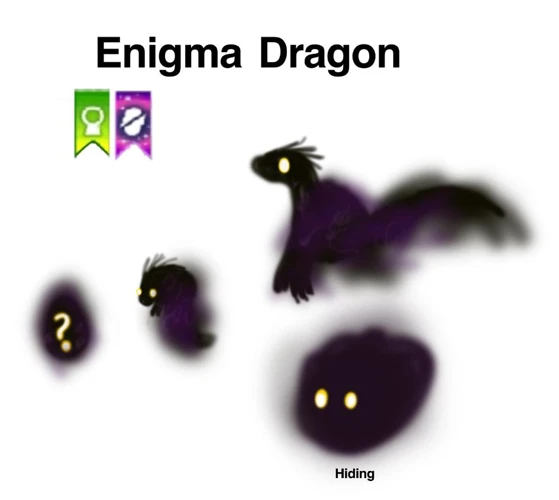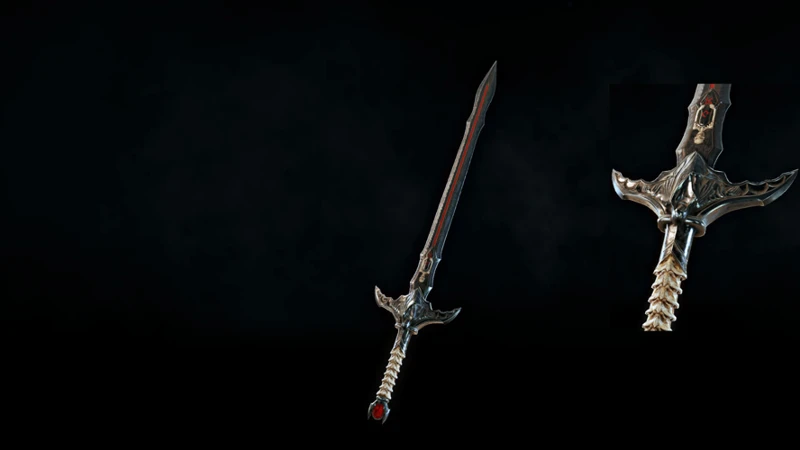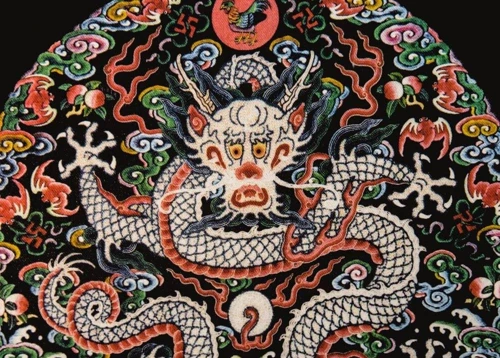For centuries, the ancient legends and myths of China have captivated and enthralled both locals and visitors alike. Among the vast tapestry of ancient Chinese mythology, the mythical creatures stand out as some of the most fascinating and enigmatic figures in the folklore. From mighty dragons that soar through the heavens to majestic phoenixes that symbolize rebirth, these creatures are steeped in symbolism and have ingrained themselves deeply in Chinese culture. In this article, we will delve into the world of mythological creatures of ancient China, exploring their origins, characteristics, and significance in the rich tapestry of Chinese mythology. So, prepare to embark on a journey beyond the realms of reality as we unravel the captivating tales of the celestial dragons, phoenixes, qilin, and the mischievous Zhu Bajie.
Dragons

Dragons, the legendary creatures of ancient Chinese mythology, hold a prominent place in the tales of the Middle Kingdom. These mythical beings are often portrayed as powerful and magnificent creatures. Within Chinese culture, dragons are associated with great power, strength, and good fortune. They are believed to possess extraordinary abilities and are said to be able to control the elements. Chinese dragons come in different forms, each with its own unique attributes. The celestial dragon is a divine creature that dwells in the heavens, while the earth dragon is associated with the land and water. The oriental dragon, on the other hand, is a combination of the celestial and earth dragons, representing harmony and balance. With their distinct characteristics and symbolism, it is no wonder that dragons are revered and celebrated in Chinese culture. (Link: /connection-mythology-astronomy-ancient-civilizations/)
1. Celestial Dragon
The celestial dragon, as its name suggests, is a mystical creature associated with the heavens. In Chinese mythology, this divine being is said to reside in the celestial realm, overseeing the cosmic order and bringing harmony to the universe. Represented as a long serpentine creature with exquisite scales, the celestial dragon is believed to have the ability to control rain, storms, and other weather phenomena. It is often depicted with a powerful, awe-inspiring presence, symbolizing authority and supremacy. The celestial dragon is also closely associated with the Emperor, as it is considered a sacred creature and a symbol of imperial power. In ancient China, the Emperor was often referred to as the “Son of the Dragon,” highlighting the celestial dragon’s significance in the ruling class. This mythical creature’s portrayal as a revered and benevolent entity reflects the Chinese people’s belief in the divine and their deep connection with cosmic forces. (Link: /egyptian-book-dead-afterlife/)
2. Earth Dragon
The Earth Dragon, also known as the “Long” in Chinese mythology, is a significant mythical creature deeply rooted in the culture and beliefs of ancient China. As its name suggests, this dragon is closely associated with the land and the environment. Unlike celestial dragons that dwell in the heavens, the Earth Dragon is believed to reside in bodies of water, such as rivers, lakes, and seas. It is often depicted as a long, serpent-like creature with scales and a powerful, elongated body. The Earth Dragon represents the power of nature and its vital role in the balance of the universe. In Chinese mythology, it is believed that the Earth Dragon controls rainfall, winds, and the fertility of the land, making it a symbol of abundance and prosperity. The dragon’s ability to control water also signifies its association with life and growth. Many ancient Chinese texts and artworks feature the Earth Dragon alongside agricultural scenes, highlighting its importance in ensuring bountiful harvests. The depiction of the Earth Dragon can vary, but it is often portrayed as a benevolent and wise creature. Its presence is considered auspicious, and its image is often used as a protective charm or amulet. The Earth Dragon holds a special place in Chinese culture, representing the harmonious relationship between humans and the natural world. (Link: /the-mesopotamian-epic-gilgamesh-hero-journey/)
3. Oriental Dragon
The Oriental Dragon, also known as the East Asian Dragon, is a fascinating creature deeply rooted in Chinese mythology. This dragon is often depicted as a long, serpentine creature with a scaled body, sharp claws, and a majestic mane. However, unlike its Western counterparts, the Oriental Dragon lacks wings. Instead, it has the power to fly using the mystical energy known as “qi”. The Oriental Dragon is associated with the water element, and in Chinese culture, water symbolizes wisdom, strength, and adaptability. This dragon is believed to have control over rain and is often associated with life-giving rains that nourish the crops. Due to its connection with water and rain, the Oriental Dragon is also associated with agriculture, prosperity, and abundance. It is believed that this dragon brings good luck and fortune to those who encounter it. In Chinese art and symbolism, the Oriental Dragon is often depicted alongside the phoenix, as a symbol of the harmonious union between yin and yang, representing balance and completeness. This majestic creature has become an enduring symbol of Chinese culture and is celebrated during festivals and symbolic ceremonies. Its presence in art, literature, and architecture further illustrates the profound influence and significance of the Oriental Dragon in Chinese society.
Phoenixes

Phoenixes, the majestic creatures of ancient Chinese mythology, are renowned for their grace and beauty. These mythical beings are often associated with rebirth, resurrection, and immortality. The most famous type of phoenix in Chinese mythology is the Fenghuang, also known as the Chinese phoenix. It is believed to be a symbol of good fortune and represents the union of yin and yang. Another notable phoenix is the Bixi, a creature with the body of a turtle and the head of a phoenix. It is often depicted as a guardian and protector, believed to bring harmony and prosperity. Additionally, the Zhi is a legendary bird that is said to possess a beautiful singing voice and is known for its wisdom. With their captivating attributes and symbolism, phoenixes have become iconic figures in Chinese folklore, embodying the eternal cycle of life and reminding us of the power of transformation and renewal.
1. Fenghuang
The Fenghuang, also known as the Chinese Phoenix, is a mythical creature that holds great significance in Chinese mythology. It is often considered the king of all birds and represents nobility, beauty, and grace. The Fenghuang is portrayed as a magnificent creature with the head of a pheasant, the body of a mandarin duck, the tail of a peacock, and the legs of a crane. It is said to have five colors: black, white, red, yellow, and green, symbolizing the five elements of metal, wood, water, fire, and earth respectively. The Fenghuang is associated with yin and yang, representing the balance of the universe. According to legend, when a great ruler ascended to the throne, the Fenghuang would appear to mark the beginning of a new era of peace and prosperity. The Fenghuang is often depicted in Chinese art and architecture, particularly in palace decorations and traditional wedding attire. Its symbolism as a celestial creature has made it a beloved and auspicious symbol in Chinese culture, representing harmony, longevity, and renewal.
2. Bixi
The mythical creature known as Bixi holds a significant place in Chinese mythology and folklore. Bixi is depicted as a legendary turtle with the features of a dragon, symbolizing the harmony between aquatic and celestial realms. It is often portrayed as a stone tablet or monument, bearing the weight of other important artifacts or structures. Bixi is believed to have the ability to carry immense loads, making it a symbol of stability, strength, and support. This creature is considered a guardian and protector, typically found near important buildings or tombs of emperors and high-ranking officials. In ancient China, Bixi was associated with imperial power and represented the connection between heaven and earth. Its image can be seen engraved on stone tablets as well as in architectural structures such as bridges and gateways. Bixi’s presence adds a sense of awe and grandeur to the surroundings, serving as a reminder of the mythical creatures that are deeply embedded in Chinese culture and history.
3. Zhi
In ancient Chinese mythology, the Zhi is a legendary creature that is often referred to as the “knowledge bird” or the “magpie” in English. The Zhi is known for its incredible wisdom and is considered to be the messenger of knowledge and intelligence. It is believed that the Zhi has the ability to collect information from all corners of the world and bring it back to share with those who seek knowledge. This mystical bird is often depicted with colorful feathers and a sharp beak, symbolizing its keen intelligence. In Chinese folklore, the Zhi is also associated with good fortune and is believed to bring luck to those who encounter it. It is often portrayed in art and literature as a symbol of wisdom and scholarship. The Zhi holds a significant place in Chinese culture, representing the importance of knowledge and the pursuit of wisdom. Its presence serves as a reminder to always seek knowledge and never stop learning.
Qilin

The Qilin is another fascinating creature in the realm of ancient Chinese mythology. Also known as the “Chinese unicorn,” the Qilin is a mythical creature that combines the characteristics of several different animals. It is often depicted as having the body of a deer, the tail of an ox, the hooves of a horse, and a single horn on its head. The Qilin is associated with auspiciousness, benevolence, and wisdom. According to legends, its appearance is often seen as an omen of a wise and just ruler coming into power. The Qilin is believed to bring good luck and prosperity wherever it goes. It is also considered a guardian and protector, capable of warding off evil spirits and bringing harmony to its surroundings. This mystical creature is often depicted in vibrant colors, and its presence is celebrated during special occasions and festivals. Throughout Chinese history, the Qilin has been a symbol of divine intervention and a representation of the nation’s cultural heritage.
To summarize, the Qilin is a mythical creature in Chinese folklore that combines the features of various animals. It is revered as a symbol of wisdom, benevolence, and good fortune. With its unique appearance and auspicious associations, the Qilin holds a special place in the hearts and imagination of the Chinese people.
Zhu Bajie
Zhu Bajie, also known as “Pigsy,” is a fascinating and quirky character in Chinese mythology. He is one of the main characters in the classic novel “Journey to the West,” which narrates the adventures of the Monkey King and his companions. Zhu Bajie, a former heavenly marshal, was exiled to the mortal realm for his mischievous behavior. This unique mythological creature has the head of a pig and the body of a human, combining both human and animal characteristics. Despite his unusual appearance, Zhu Bajie proves to be a loyal and brave companion on the journey. He possesses immense strength and is a formidable fighter, wielding a magical rake as his weapon. However, Zhu Bajie is also known for his gluttony and laziness, often getting distracted by food and indulging in earthly pleasures. Despite these flaws, he contributes to the group’s success with his fighting skills and occasional cleverness. Zhu Bajie’s character signifies the complexity of human nature, highlighting both strengths and weaknesses. His portrayal in “Journey to the West” serves as a reminder that even mythical creatures have their own flaws and challenges to overcome, making him a relatable and endearing character in Chinese folklore.
Conclusion
In conclusion, the mythological creatures of ancient China showcase the rich and vibrant tapestry of Chinese folklore and culture. From the majestic dragons that symbolize power and fortune, to the graceful phoenixes that represent rebirth and renewal, these mythical beings have captured the imaginations of people for centuries. The qilin, with its benevolent nature and protective qualities, and the mischievous Zhu Bajie, with his humorous and relatable character, add depth and variety to the world of Chinese mythology. These creatures not only serve as sources of inspiration for art, literature, and cultural traditions but also embody the values and beliefs cherished by the Chinese people. Whether it is the celestial dragon soaring through the heavens or the fenghuang bringing harmony and balance, these mythological creatures continue to fascinate and intrigue people around the world. Exploring the realm of ancient Chinese mythology reveals a profound connection between human imagination and the natural world, offering a glimpse into the rich depths of cultural heritage. So let us delve further into the captivating world of mythological creatures and continue to celebrate the wonders of ancient China.
Frequently Asked Questions
1. How do dragons hold significance in Chinese culture?
Dragons hold great significance in Chinese culture as they symbolize power, strength, and good fortune. They are revered creatures associated with abundance, prosperity, and protection.
2. Are dragons considered mythical or real in Chinese mythology?
In Chinese mythology, dragons are considered mythical creatures. They are believed to exist in the realm of folklore and symbolism rather than being real physical beings.
3. Can dragons be found in other mythologies besides Chinese?
Yes, dragons are prevalent in many mythologies around the world. They appear in Greek, European, and even Mesopotamian mythology, albeit with different interpretations and characteristics.
4. What are the different types of Chinese dragons?
There are various types of Chinese dragons, including the celestial dragon, earth dragon, and oriental dragon. Each type represents different aspects of nature and holds unique symbolism.
5. Are Chinese dragons considered benevolent or malevolent creatures?
Chinese dragons are generally considered benevolent creatures associated with good fortune and protection. They are often depicted as bringers of rain and prosperity, unlike dragons in some other cultures that may be seen as menacing or destructive.
6. How are dragons depicted in Chinese art and literature?
Dragons are prominent motifs in Chinese art and literature. They are depicted as long, serpentine creatures with scales, horns, and whiskers. They are often shown flying through the skies or coiling around objects symbolizing power and auspiciousness.
7. Is there a connection between dragons and emperors in Chinese culture?
Yes, dragons hold a special connection with emperors in Chinese culture. Dragons were seen as the symbol of imperial power, and the emperor himself was often referred to as the ‘Son of the Dragon.’
8. Are there any dragon festivals or celebrations in China?
Yes, China celebrates the Dragon Boat Festival, which is held annually to honor Qu Yuan, a famous poet and statesman. The festival includes dragon boat races and other dragon-themed activities.
9. Do dragons have a role in Chinese astrology?
Yes, dragons are one of the 12 zodiac signs in Chinese astrology. Those born in the Year of the Dragon are believed to possess qualities such as strength, courage, and success.
10. Are there any famous Chinese myths or legends involving dragons?
Yes, one famous Chinese legend is the story of the Dragon Gate, where carp swim upstream against powerful currents to transform into dragons. This story symbolizes perseverance and the ability to overcome obstacles to achieve greatness.








